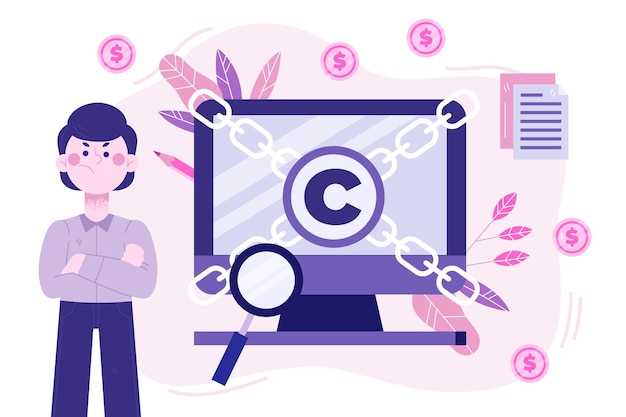Start by selecting the right Creative Commons license to enhance the accessibility and sharing of your work. Each license type serves distinct purposes, ranging from allowing only attributions to enabling adaptations and commercial uses. Understanding the nuances between Attribution, Non-Commercial, No Derivatives, and ShareAlike licenses is crucial for both protecting your work and empowering others to benefit from it. Opting for the suitable license depends on your objectives around distribution, reputation, and collaboration.
Explore practical strategies to maximize the benefits of Creative Commons licensing. One effective approach is to clearly communicate the licensing terms alongside your work, ensuring transparency for your audience. Utilize platforms that support Creative Commons, such as Flickr for images and SoundCloud for audio, which simplify the process of finding and sharing licensed content. These platforms provide tags and search filters to help others easily recognize and attribute your work correctly.
Combine Creative Commons assets to optimize creativity and innovation within legal boundaries. By leveraging publicly available works, you can build upon existing ideas while respecting the original creators’ rights. Collaborating through openly licensed projects can attract wider audiences and foster a community of users who appreciate and contribute to your work. Always provide accurate credits to maintain the ecosystem of sharing and recognition that underpins the Creative Commons philosophy.
Recognizing Creative Commons License Types and Their Implications

Choose the right Creative Commons license based on your intended use of the work. Licenses range from the least restrictive, such as CC BY, which only requires attribution, to more restrictive options like CC BY-NC-ND, which prohibits commercial use and derivative works. Understanding these distinctions helps you comply with legal obligations while respecting creators’ rights.
The CC BY license grants the most freedom, allowing sharing and adaptation, even commercially, with proper credit to the creator. This fosters collaboration and increases the dissemination potential of your work. If preserving the original form of the work is critical, consider the CC BY-ND license, which allows for sharing without alterations.
For those wanting to restrict commercial exploitation, licenses like CC BY-NC or CC BY-NC-SA are suitable, the latter requiring derivative works to be licensed under the same terms. This maintains a level of consistency in how adaptations are shared. The CC BY-SA license permits reuse and modification, provided any new creations are licensed similarly, promoting similar open sharing practices.
Employing Creative Commons licenses also carries implications for discoverability and usage in educational and digital spaces. Clearly labeling your work or ensuring the correct implementation of the license on platforms can enhance accessibility and proper attribution. This transparency encourages ethical use and supports a culture of sharing and respect for intellectual property.
Exploring Different Creative Commons License Types
Careful selection of a Creative Commons license can significantly enhance the accessibility and usability of your work. Here’s a detailed guide to help you choose the right type, each with unique permissions and restrictions.
The different Creative Commons licenses can be broken down into six main types, each providing varied levels of freedoms and obligations.
| License Type | Key Features |
|---|---|
| CC BY | Allows others to distribute, remix, adapt, and build upon your work, even commercially, as long as they credit you for the original creation. |
| CC BY-SA | Enables others to modify and use your work for any purpose, including commercially, under the condition that they credit you and license their new creations under the identical terms. |
| CC BY-ND | Permits redistribution, commercial and non-commercial, as long as the work remains unchanged and complete, crediting you as the original author. |
| CC BY-NC | Allows others to remix, tweak, and build upon your work non-commercially, with credit to you. Derivative works don’t need to carry the same license terms. |
| CC BY-NC-SA | Enables non-commercial remixing and building upon your work, with credit to you. Any new work must carry the same license terms. |
| CC BY-NC-ND | This is the most restrictive license. It allows others to download your works and share them with others as long as they credit you, but they cannot change them or use them commercially. |
One critical consideration is whether you want your work to be used commercially. If that’s the case, avoid licenses with a “Non-Commercial” clause. If maintaining the integrity of your work is prioritized, opting for “No Derivatives” might be suitable. Share-alike licenses help in ensuring derivative works also carry similar sharing freedoms.
When applying these licenses, make sure they are clearly displayed on your work to avoid confusion. Understand the implications of each to align them with your creative and distribution goals. The Creative Commons website provides tools to assist in selecting and applying these licenses to your work effectively.
Detailed exploration of each license type: CC BY, CC BY-SA, CC BY-ND, CC BY-NC, etc.
CC BY (Attribution) empowers creators to allow others to distribute, remix, adapt, and build upon their work, even commercially, as long as the original creator is credited. It’s the most flexible license and strongly promotes sharing and adapting.
CC BY-SA (Attribution-ShareAlike) also permits remixing and building upon the work, including commercial use, with the condition that adaptations must be licensed under identical terms. This requirement ensures that derivative works will remain open and available to others under the same conditions, fostering a cycle of continued sharing.
CC BY-ND (Attribution-NoDerivs) allows for redistribution, both commercial and non-commercial, as long as the work is passed along unchanged and in whole, with credit to the author. It is ideal for creators who need protection against unauthorized changes but still wish to allow sharing.
CC BY-NC (Attribution-NonCommercial) permits adaptation and distribution for non-commercial purposes only, while the author must be credited. This license is suitable for creators who want to limit commercial applications but encourage educational or charitable uses.
CC BY-NC-SA (Attribution-NonCommercial-ShareAlike) combines restrictions of non-commercial use, along with the requirement to license derivatives under similar terms. This option maintains non-commerciality and ensures continued open access to altered versions.
CC BY-NC-ND (Attribution-NonCommercial-NoDerivs) is the most restrictive of the six main licenses, allowing users to download works and share them with others, as long as the author is credited. Use is limited to non-commercial purposes, and no derivative works are allowed. Opt for this license to maintain substantial control over the original content.
Each license type has its unique attributes and choosing the right one hinges on the creator’s specific needs and intentions for their work’s dissemination and usage. Consider practical applications and align your choices with your creative goals.
Implications of Using Each License Type
Select the most appropriate Creative Commons license based on your sharing goal while considering any restrictions or allowances each type presents. The Attribution (CC BY) license, for example, offers maximum dissemination with the requirement that users credit you. If you value modifications and adaptations but wish to retain credit, CC BY-SA is suitable, stipulating that derivative works must also be shared alike.
Restrict commercial use with the Attribution-NonCommercial (CC BY-NC) license, allowing only non-commercial entities to benefit from your work. For creators who want to restrict further modifications, the CC BY-ND license is optimal, prohibiting any derivatives, ensuring only the original work is distributed.
CC BY-NC-SA combines non-commercial sharing with the stipulation for sharing alike, melding both restrictions to protect original intent while promoting collaboration. Conversely, choose CC BY-NC-ND when your priority is to keep your work intact and non-commercial, offering it for redistribution without alterations.
Each license impacts the potential reach and use of your creation, requiring careful selection regarding your creative intentions and audience interaction. Consider how limitations interact with your goals and whether they align with your vision for broader cultural or educational access.
Understanding the permissions and restrictions associated with each license type.
To make the most of Creative Commons (CC) licenses, focus on identifying the specific permissions and limitations they assign to content. Start with the CC BY license, which allows users to distribute, remix, adapt, and build upon the work, even commercially, as long as they give appropriate credit to the original creator. This makes CC BY the most flexible and permissive option available.
Next, consider the CC BY-SA (ShareAlike) license. This variation also permits adaptation and commercial use, but requires that new creations be licensed under identical terms, promoting open sharing and proliferation of derivative works.
The CC BY-ND (NoDerivs) license only allows for redistribution as long as the work remains unchanged and is credited in its original form. This license type restricts adaptations or modifications.
Delve into the CC BY-NC license for non-commercial freedoms. It allows alterations and sharing, requiring credit but forbidding commercial use. Pairing this with the ShareAlike or NoDerivs clauses results in CC BY-NC-SA and CC BY-NC-ND licenses, respectively. The former allows adaptation, insisting on non-commercial use and similar licensing of new works, while the latter suppresses derivations, maintaining usage within non-commercial bounds only.
Finally, the CC0 (Public Domain Dedication) is not technically a license but a waiver, affording the most freedom by enabling works to be used without restrictions. Creators opting for this waiver relinquish all rights, promoting unrestricted use worldwide.
Always check the detailed license agreement for specific terms and consult legal resources if in doubt. Understanding these nuances ensures responsible use of licensed materials while respecting and fostering creative freedom and innovation.
Choosing the Right License for Your Needs
Start by identifying your primary goals for licensing your creative work. This helps determine which Creative Commons license aligns best with your objectives.
- Attribution (CC BY): If you’re keen on allowing others to distribute, remix, adapt, and build upon your work, even commercially, provided they credit you for the original creation, this license is your go-to.
- Attribution-ShareAlike (CC BY-SA): Ideal if you wish for others to use and modify your work as long as they credit you and license their new creations under identical terms. This is the license used by Wikipedia.
- Attribution-NoDerivs (CC BY-ND): Choose this if you’re fine with others copying and distributing your work, as long as they don’t modify it in any way or use it commercially. You still require credit for your work.
- Attribution-NonCommercial (CC BY-NC): For those who prefer to allow others to remix and build upon their work non-commercially, this license requires users to credit you, but they’re not obliged to license their derivative works on the same terms.
- Attribution-NonCommercial-ShareAlike (CC BY-NC-SA): Use this to let others remix, tweak, and build upon your work non-commercially, as long as they credit you and license their new creations under the identical terms.
- Attribution-NonCommercial-NoDerivs (CC BY-NC-ND): The most restrictive license, suitable if you want others to download your works and share them as long as they credit you, without altering or using them commercially.
Reflect on the level of control you wish to maintain over commercial use and derivative works. Use the license chooser tool available on the Creative Commons website for further guidance tailored to your needs.
Factors to consider when selecting a Creative Commons license for your work.
Choose a license that aligns with your goals for sharing. If you want to allow others to make derivative works or use your work for commercial purposes, consider more permissive licenses like CC BY or CC BY-SA. These licenses are often chosen when the objective is broad dissemination or collaboration.
Think about how you want your work to be attributed. All Creative Commons licenses require attribution, but some details might influence your decision. Ensure you are comfortable with how credit is given under each specific license.
Consider the level of access and modification you are willing to permit. If preserving the integrity of the original work is important to you, licenses such as CC BY-ND, which prohibits derivatives, might be suitable.
Decide if allowing commercial use aligns with your goals. If you prefer to limit usage to non-commercial purposes, options like CC BY-NC or CC BY-NC-SA offer greater control over commercial exploitation of your work.
Keep in mind that your selection will impact how others can combine your work with other licensed materials. Licenses like CC BY-SA require derivative works to carry the same license, promoting open sharing but potentially limiting some uses.
Reflect on future flexibility. Some licenses are more constraining than others, so it’s wise to anticipate how your needs might evolve over time and choose a license that balances openness with protection.
Modifying and Combining Licensed Works
First, verify compatibility between licenses when planning to modify or combine creative works. Consult the licensing terms to ensure the permissions align with your project’s goals. For instance, Creative Commons licenses that include “ND” (NoDerivatives) restrict modifications, so these works must be left intact when sharing.
Adapt an original work with the appropriate attribution to the original creator. Give proper credit as required by the specific license; this typically includes the creator’s name, the title of the work, and a link to the license. If using CC BY or similar licenses, you can modify the material while acknowledging the original source.
When blending works under different licenses, choose one that allows for the most freedom within the combined piece. If some parts of your project use a “SA” (ShareAlike) license, maintain the openness by applying the same license or a compatible alternative to the whole work to comply with the licensing terms.
Document your modifications and combinations clearly to support transparency. This includes noting changes made to the original works and how they have been incorporated into the new creation. This practice not only clarifies your creative process but also respects the contributions of original creators.
By understanding and respecting these guidelines, you can navigate Creative Commons licenses effectively, enabling innovation and collaboration within legal and ethical boundaries.
Understanding the rules around modifying licensed works and combining different licensed materials.
Start by examining the specific Creative Commons licenses associated with each work you wish to modify or combine. Each license type has its own stipulations:
- BY (Attribution): You can modify the work as long as you provide appropriate credit to the original creator.
- SA (ShareAlike): Any modified material must be distributed under the same license terms as the original work.
- ND (NoDerivatives): You may not modify the work. You can use it as-is or seek explicit permission for changes.
- NC (NonCommercial): Modifications are permitted if the resulting work is not used for commercial purposes.
When combining works with different licenses, ensure compatibility. For example, works with an ND clause cannot be legally altered or merged. SA works require derivatives to remain under the same license, demanding careful attention to licensing compatibility.
Here are steps to navigate combining licensed materials:
- Identify License Terms: Carefully check each component’s license. Use official Creative Commons resources to clarify any uncertainties.
- Assess Compatibility: Cross-examine licenses for compatibility, especially around ND and SA clauses. Only combine works if licenses align.
- Proper Attribution: Keep detailed records for all sources and provide clear credit in a manner that’s consistent with the specifications of each license.
- Seek Permissions When Necessary: If desired modifications are not covered by existing licenses, contact the rights holders for permission.
Consistently applying these best practices ensures that your creative efforts respect the rights of original creators and remain faithful to the terms of use defined by each Creative Commons license.
Best Practices for Licensing and Using Photos with Creative Commons

Always review and understand the specific Creative Commons (CC) license associated with a photo before using it to ensure compliance. Pay close attention to the requirements regarding attribution, commercial use, and modifications. Some licenses do not allow for commercial use or may require that any derivatives be shared under the same terms.
Give proper credit to the original creator by providing their name, the title of the work, the license type, and a link to the license details. This not only fulfills the legal requirements but also respects the creator’s effort.
Utilize resources like Wikimedia Commons or Flickr, which offer a robust selection of CC-licensed images. These platforms often have built-in tools that help narrow down image searches based on specific CC license requirements.
When modifying an image, clearly state that the work has been altered and, if necessary, share your version under a compatible CC license, as specified by the original license. This transparency fosters an open and collaborative community.
Maintain thorough records of the creators’ details and the associated licenses for all CC photos you use. This documentation can be invaluable, especially for projects that might undergo audits or require licensing reviews in the future.
Regularly check Creative Commons guidelines and updates to stay informed about any changes in license types or new recommended practices for usage. Engaging with communities that focus on open culture can also offer insights and keep your practices aligned with current standards.
Video:

How to use Creative commons videos without COPYRIGHT STRIKE on YouTube | Upload CC videos (No claim)
How to use Creative commons videos without COPYRIGHT STRIKE on YouTube | Upload CC videos (No claim)
Q&A:

What are the main types of Creative Commons licenses?
Creative Commons licenses come in six main types, each with different levels of permissions. These licenses range from the most permissive, allowing any use of the work as long as the creator is credited, to more restrictive ones that limit the work to non-commercial use, no derivative works, or both. The types are: CC BY, CC BY-SA, CC BY-ND, CC BY-NC, CC BY-NC-SA, and CC BY-NC-ND. Each of these designations represents specific rights that the creator wants to offer, and understanding these is key to choosing the right license for your needs.
How do Creative Commons licenses impact commercial use of a work?
Creative Commons licenses have specific terms regarding commercial use. If a license includes ‘NC’ in its designation, such as CC BY-NC or CC BY-NC-SA, this means the work cannot be used for commercial purposes. For uses that involve profit-making or commercial gain, it’s essential to choose or look for a work licensed under CC BY or CC BY-SA, which allows for commercial use provided the terms of attribution and share-alike (if applicable) are met. It’s important for both creators and users to understand these terms to ensure compliance with the license conditions.
Can a Creative Commons license be revoked once it’s applied to a work?
Once a Creative Commons license has been applied to a work, it is irrevocable for any copies distributed or used while the license is in effect. This means that once you’ve shared or used a work under a particular Creative Commons license, those who have acquired it under that license continue to benefit from those rights, even if the creator later changes their mind. However, the creator can decide to discontinue offering the work under that license moving forward, but cannot retract previously granted permissions.
What are best practices for using Creative Commons licensed works?
When using Creative Commons licensed works, always provide proper attribution to the original creator. This typically includes the title of the work, the creator’s name, the license type, and a link to the license. Ensure you understand the license terms, such as non-commercial or no-derivative restrictions, and use works accordingly. If you’re incorporating the work into a new project, consider if your use aligns with the original terms. When in doubt, reach out to the original creator for clarification or permission, especially for uses not clearly covered by the license, such as adaptations or commercial applications.





